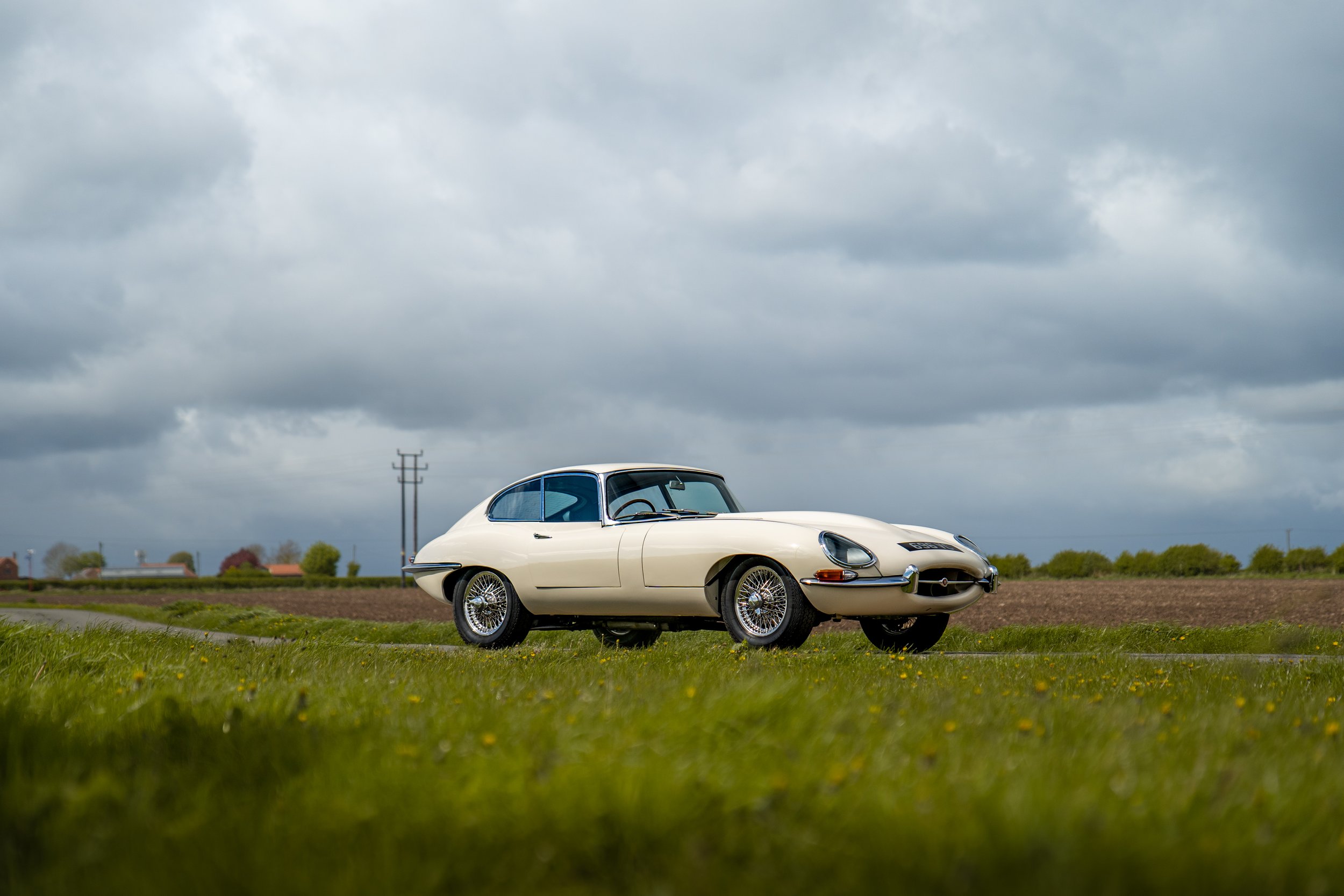
Throwback Drive: Jaguar E-Type
It’s not often you get to have a go in an E-Type Jag. Mark gets behind the wheel of a car that has defined a manufacturer.
WORDS: Mark Rose | PHOTOS: Matt Price
There are some cars that you just can’t say no to when the opportunity to drive one presents itself. One of them is the iconic Jaguar E-Type, a vehicle with a history and legacy so rich that it, perhaps unfairly, holds modern-day Jaguar to an impossibly high standard. I’ll ponder its impact on today’s Jag road cars later on in this article, but first we need to look back to where it all started.
The E-Type was based on Jaguar’s D-Type racing car – itself an evolution of the successful C-Type racer – which won the Le Mans 24 Hours for three consecutive years from 1955. There’s an old saying which goes “win on a Sunday, sell on a Monday” and so it’s no surprise that Jaguar decided to cash in on their motorsport success with a road-going version. There was a limited run of 16 D-Type continuation cars called the XKSS (there were supposed to be 25 but nine chassis were lost in a factory fire), however, a full scale production sports car didn’t arrive until 1961 when the E-Type was launched.
It was first presented at the 1961 Geneva Motor Show, although amusingly, the show car nearly didn’t make it to the event. The E-Type proved so popular with the British media that it didn’t leave the UK until the evening before the unveiling, and was famously driven overnight to Geneva where it arrived some 20 minutes before the big reveal. Talk about cutting it fine…
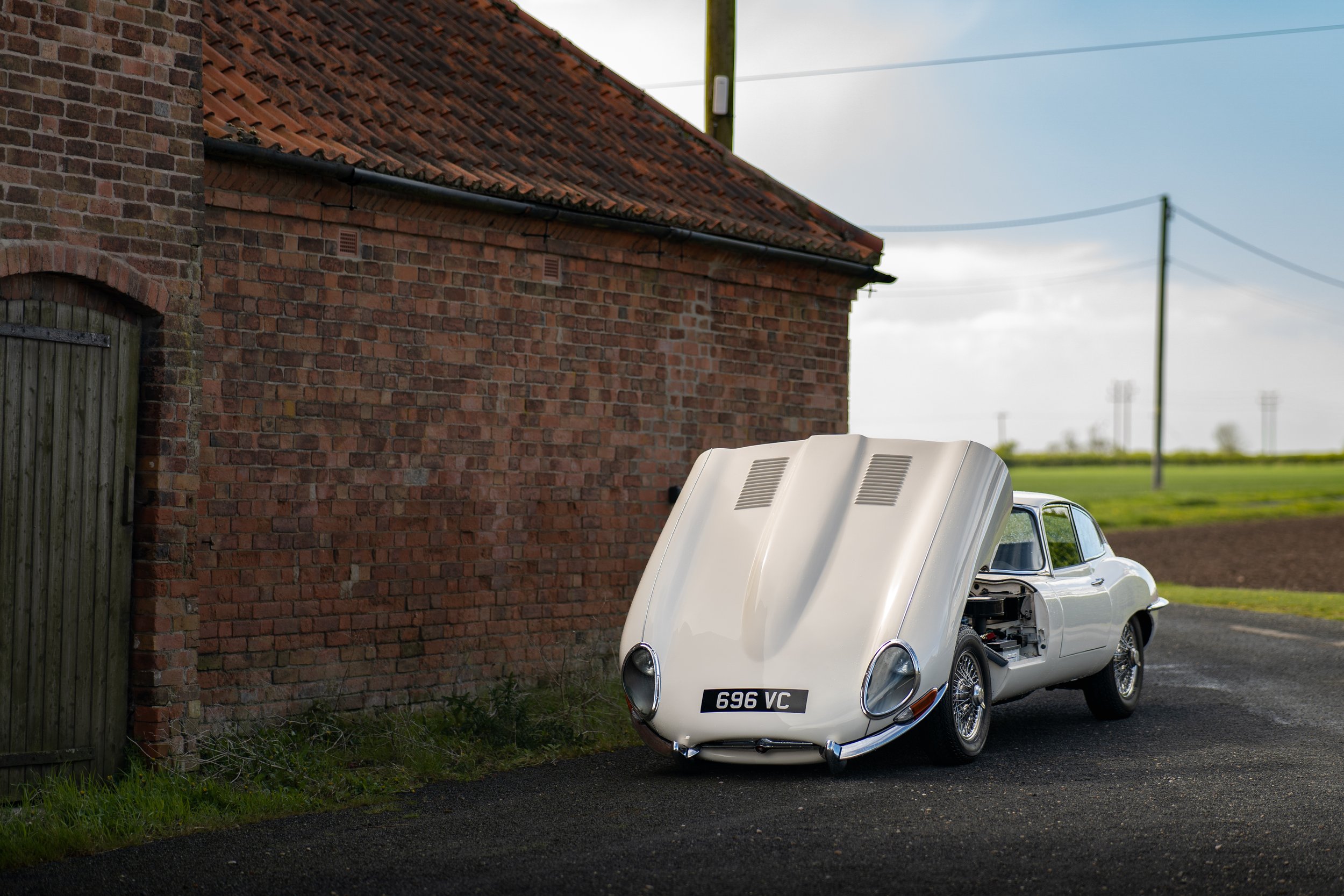

Clearly, the rush to get it to Geneva in time didn’t do anything to harm the launch, because it proved an instant hit on its unveiling. Not only was it beautiful, fast and technically advanced for its time, but it was also priced at just £2,100 new, which is around £60,000 in today’s money. The price was a bargain when you consider how special the E-Type was and the fact that in its day, it was the world’s fastest car with a top speed of 150mph. The E-Type remained in production until 1974 and during that time there were Series 1, 2 and 3 models with various engine sizes, in FHC (Fixed Head Coupe) and OTS (Open Two Seater) bodies – there was even a long wheel base 2+2 variant that debuted in 1966. During the car’s 15 years on sale, approximately 72,500 examples were produced and the list of celebrity owners was considerable, with famous names including Steve McQueen, Frank Sinatra, and George Best, to name only a few.
My opportunity to drive an E-Type came about because my friends at the Car Crowd currently have one on their alternative investment platform which specialises in fractional ownership. Unsurprisingly, the Jag is fully funded and around 109 own a share in the vehicle, with a view that E-Type values will keep on climbing – I challenge you to name me a cooler inflation hedge. The model in question is a Series 1 Fixed Head Coupe in Old English White with the 3.8 litre engine. It’s unrestored but still in good condition given its age, and the intention is to leave it in its current state in order to maintain its provenance while other examples receive restorations.

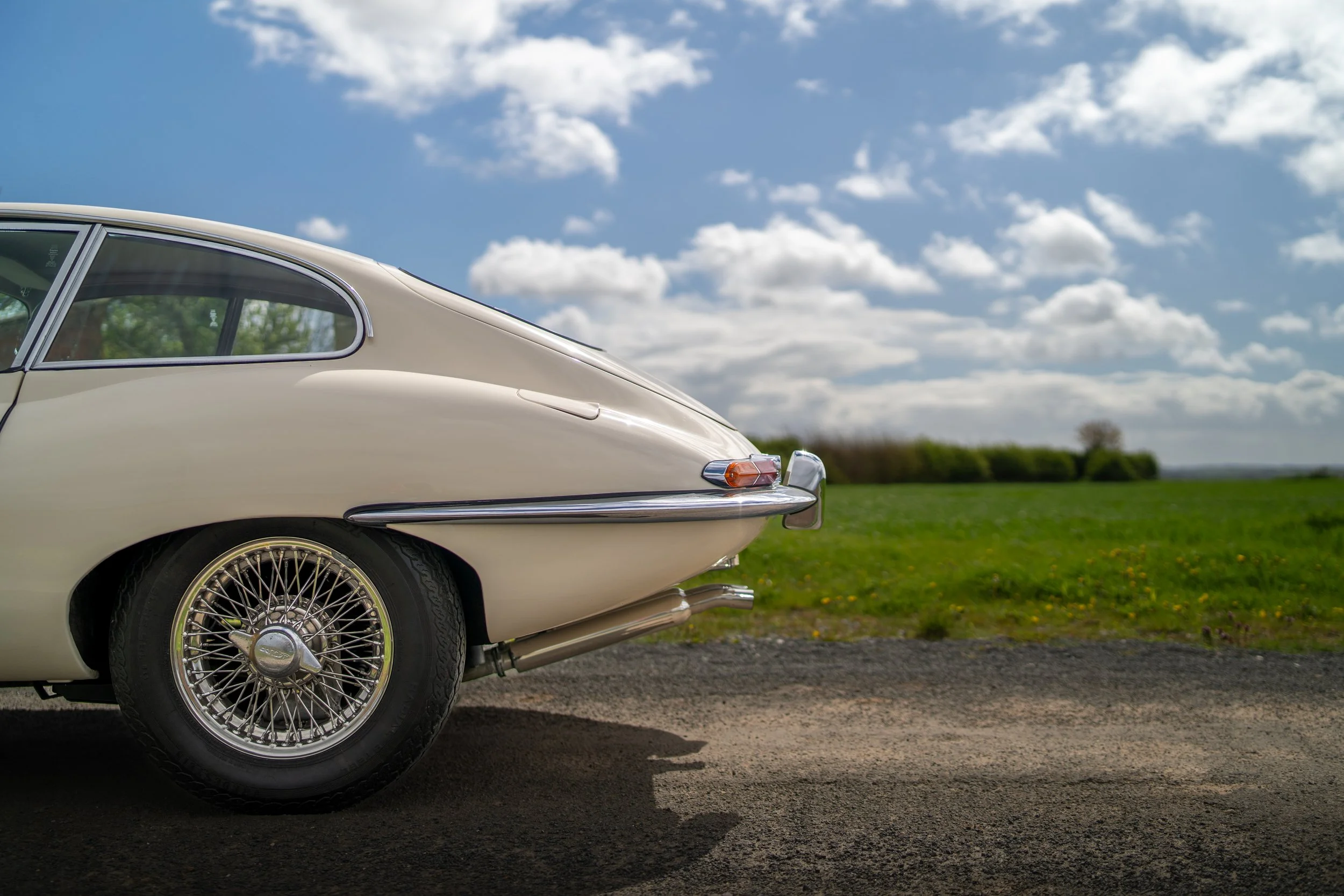
After much admiring while waiting for the changeable weather to clear up, it was time to get out on the road and see what the old Jag was like. When I drive classic cars, I always attempt to understand them through the lens of a car enthusiast, not a road tester. Cars tend to be a product of their time, and so must be viewed as such, not through rose tinted spectacles. If you ever have the chance to drive an E-Type, then that’s the approach you must take, because while it no doubt felt dynamic to drive in the 1960s, it certainly doesn’t feel that way today.
The steering is vague, the gearbox is fiddly, it lurches around corners, it understeers like a boat, and although Jaguar originally claimed the 3.8 litre engine made 265bhp, it certainly doesn’t feel like it now. You have to accept that when driving an E-Type you’re not going anywhere in a hurry, and I doff my cap to the people who race them, because it must be completely terrifying.
However, once you realise that there’s little point in pushing against its limits, you can enjoy it for what it is: an extremely beautiful classic vehicle that sounds amazing and rides well. Unfortunately, I drove this coupe on a cold, rainy day in early April, but I would absolutely love to have a go in a roadster on a warm summer’s day. Call me a romantic, but you can’t tell me that cruising along a country road in an E-Type, one evening in July at a leisurely pace doesn’t sound enticing. And despite my limited time with it, it still gave me this sense that it would much prefer to be driven accordingly. Over time, you would also learn its idiosyncrasies and gain enjoyment from extracting the best from it: whether it’s that perfect gear change, working the performance from the engine, or best utilising what little grip you have. Modern cars are easy to get on top of, but conquering an old classic requires skill which makes them deeply satisfying machines to master.
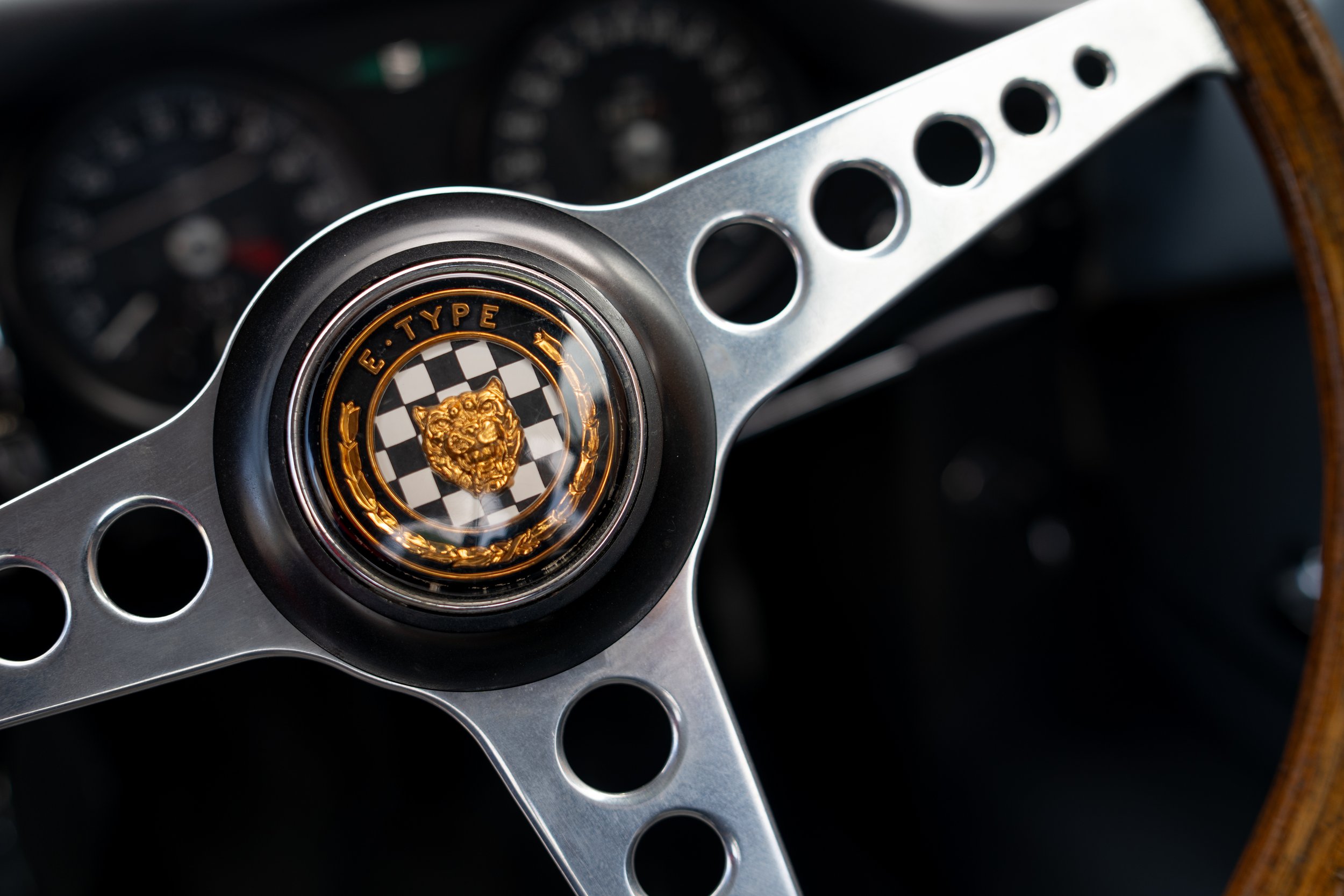
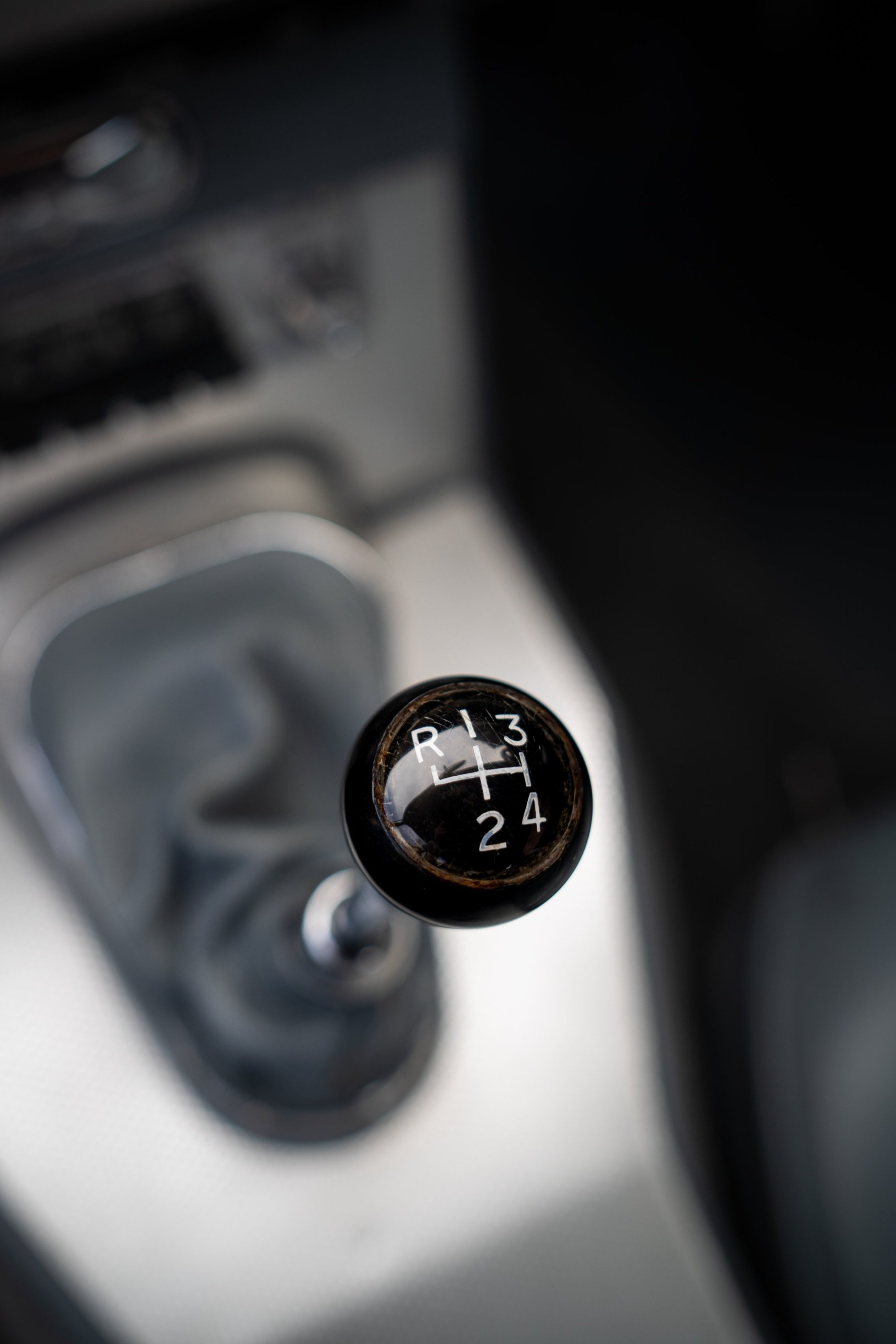
I think it’s fair to say that I didn’t fully appreciate the E-Type during my time behind the wheel, but after I had a few days to digest the experience, I began to understand what it’s about. This is the car that Enzo Ferrari supposedly claimed was the most beautiful in the world, and while I still have a preference for a Mercedes 300 SL Gullwing, or an Aston Martin DB5, I reckon Enzo wasn’t far off in his analysis – if he did actually say it.
In many respects, what it drives like doesn’t matter because you would never get behind the wheel regularly enough for it to be of concern. And if you have the big bucks and want something that looks like an E-Type but drives like a modern car, then you would buy an Eagle Speedster. Owners of an E-Type Jag, however, would be more than happy to store it for six months and bring it out only when the weather and mood takes them for the other half a year. And when they do, I’m sure they all drive along happily in the knowledge that they’re piloting one of the most beautiful and timeless machines ever made.
The E-Type’s success is such that it still impacts the motor industry more than 60 years on from its unveiling. Not only is the restoration business booming, but there are companies that build restomods, brave gentlemen drivers who race them, and there are various owner’s clubs for enthusiasts to join. There’s even a market for investing in these cars, as shown by the Car Crowd. What Jaguar created was a true icon of the automotive world, but they also set an incredibly high bar for themselves to chase, even if they didn’t realise it at the time. The E-Type put Jag firmly on the map, but the truth is they’ve since failed to recreate that same fanfare and desire in another one of their road cars. It’s obvious that the E-Type was truly a one-off, and as Jaguar commits to an all-electric future, it’s likely that their glory days won’t be returning anytime soon. The E-Type, will likely remain the high watermark in Jag’s storied history.
Engine: Six-cylinder
Displacement: 3.8 litre
Power: 265
Torque: N/A
Transmission: 4-speed manual
0-62mph: N/A
VMAX: 150mph
Kerbweight: N/A
Price: N/A
Technical Specifications
A true motoring icon. The Jaguar E-Type is a timeless classic and a car which transcends the very manufacturer that created it.
Verdict
“This is the car that Enzo Ferrari supposedly claimed was the most beautiful in the world”
In collaboration with



